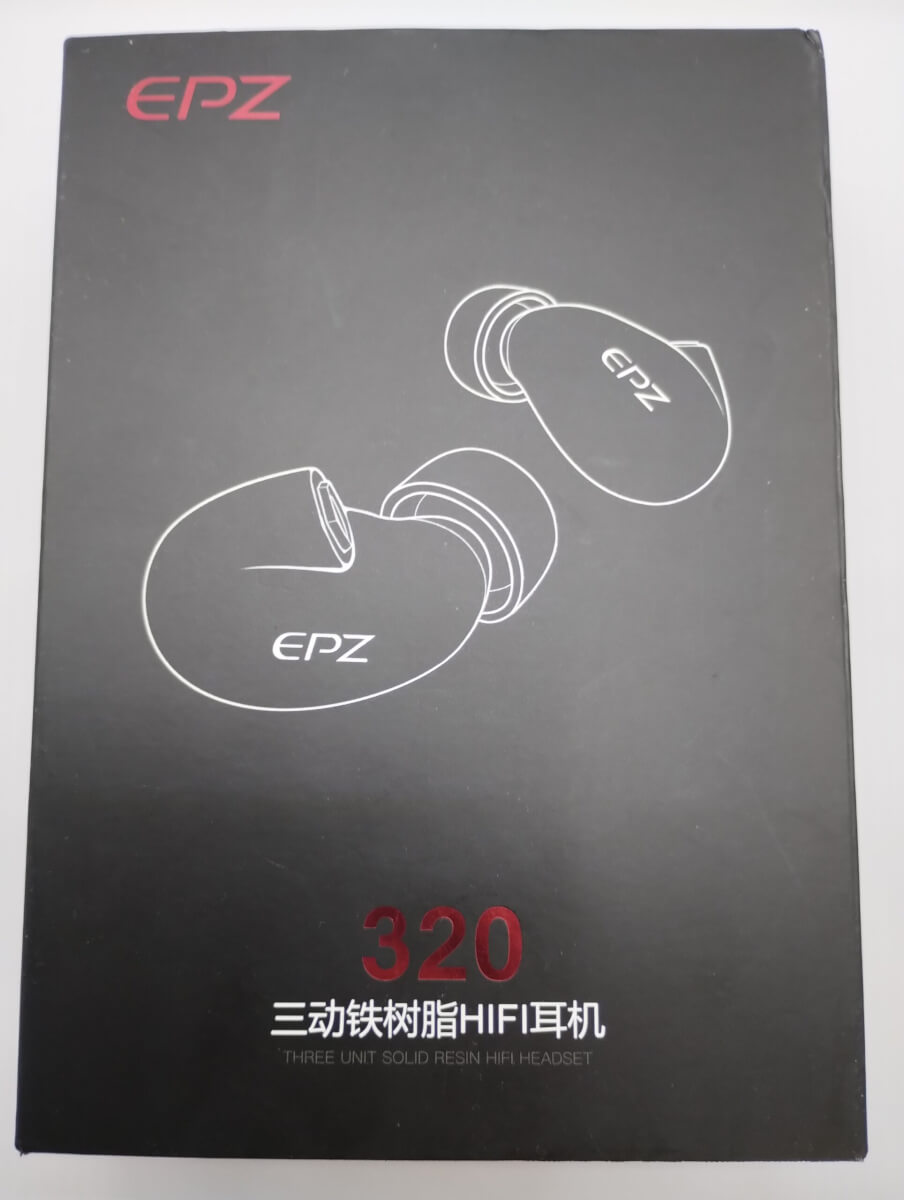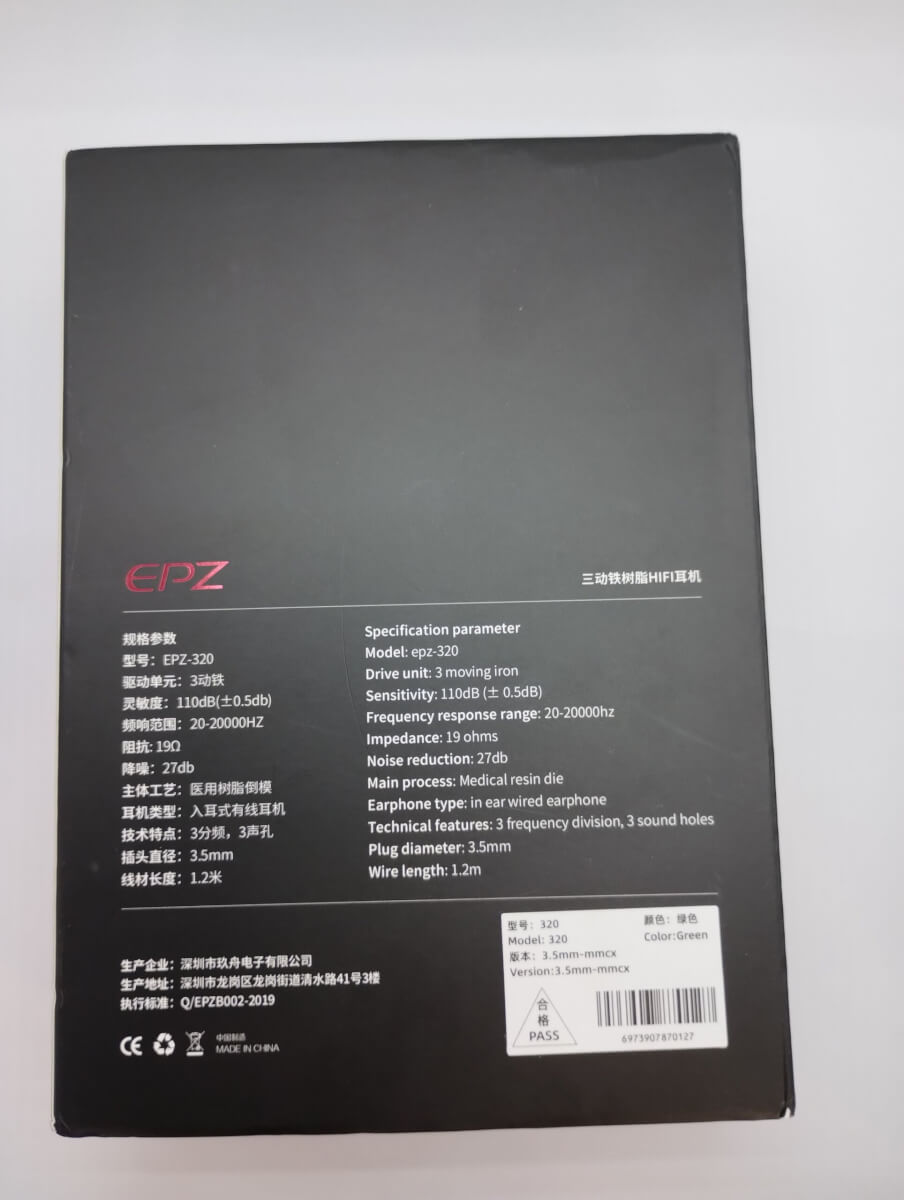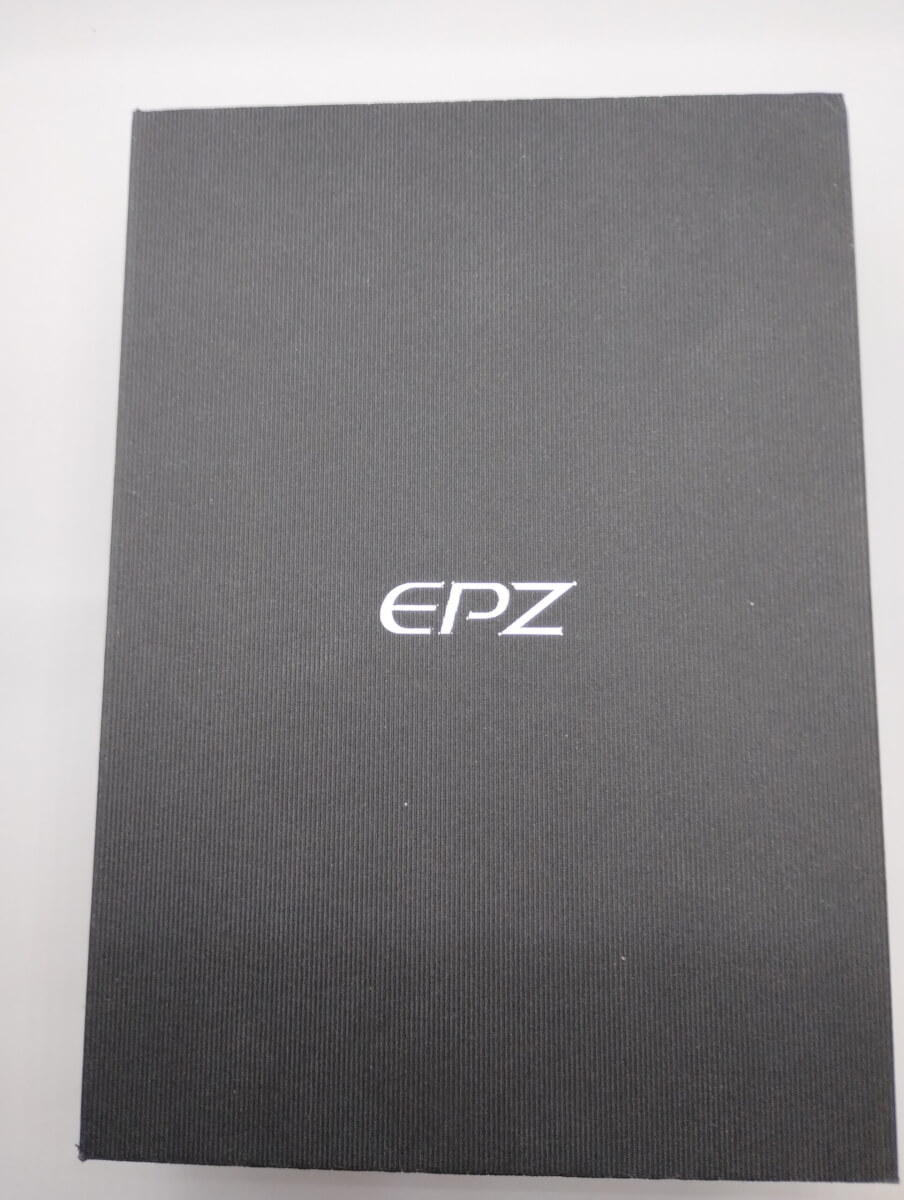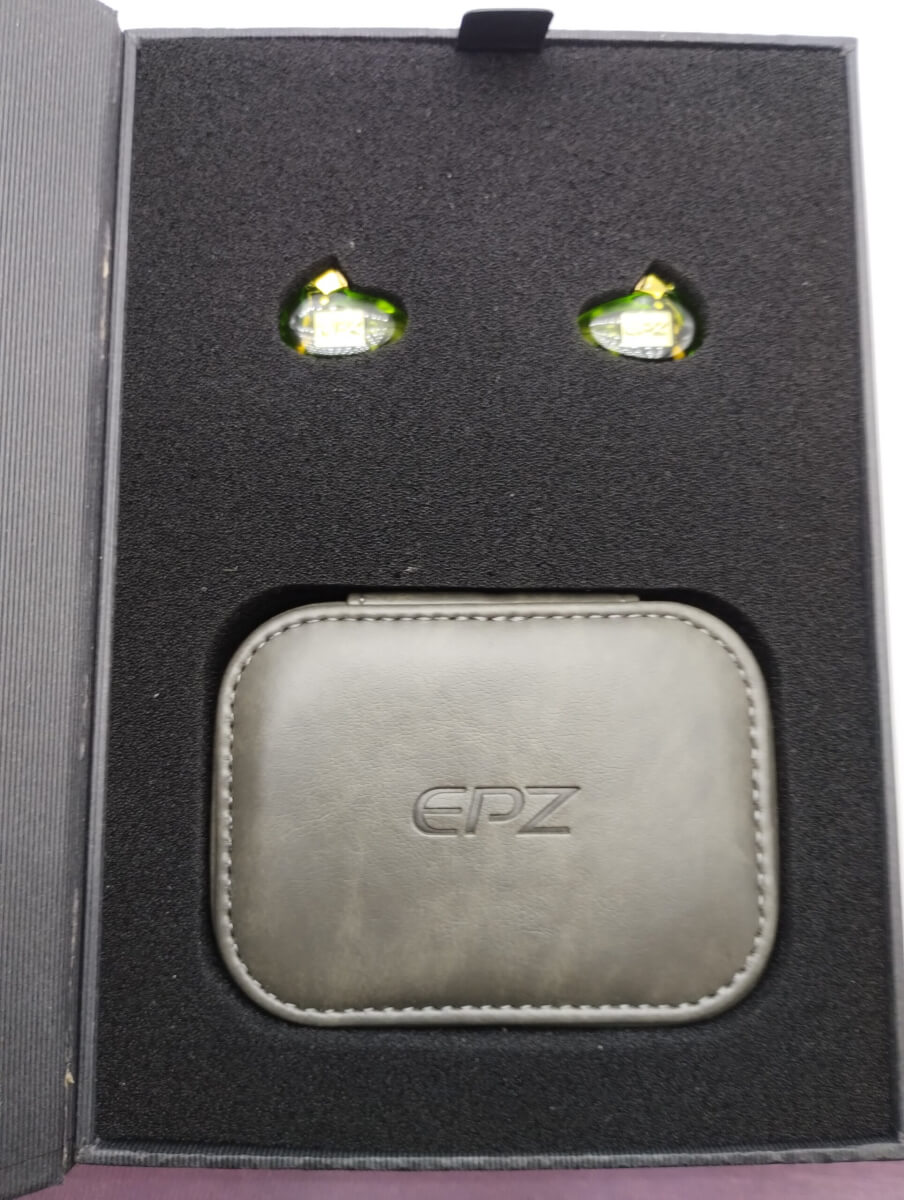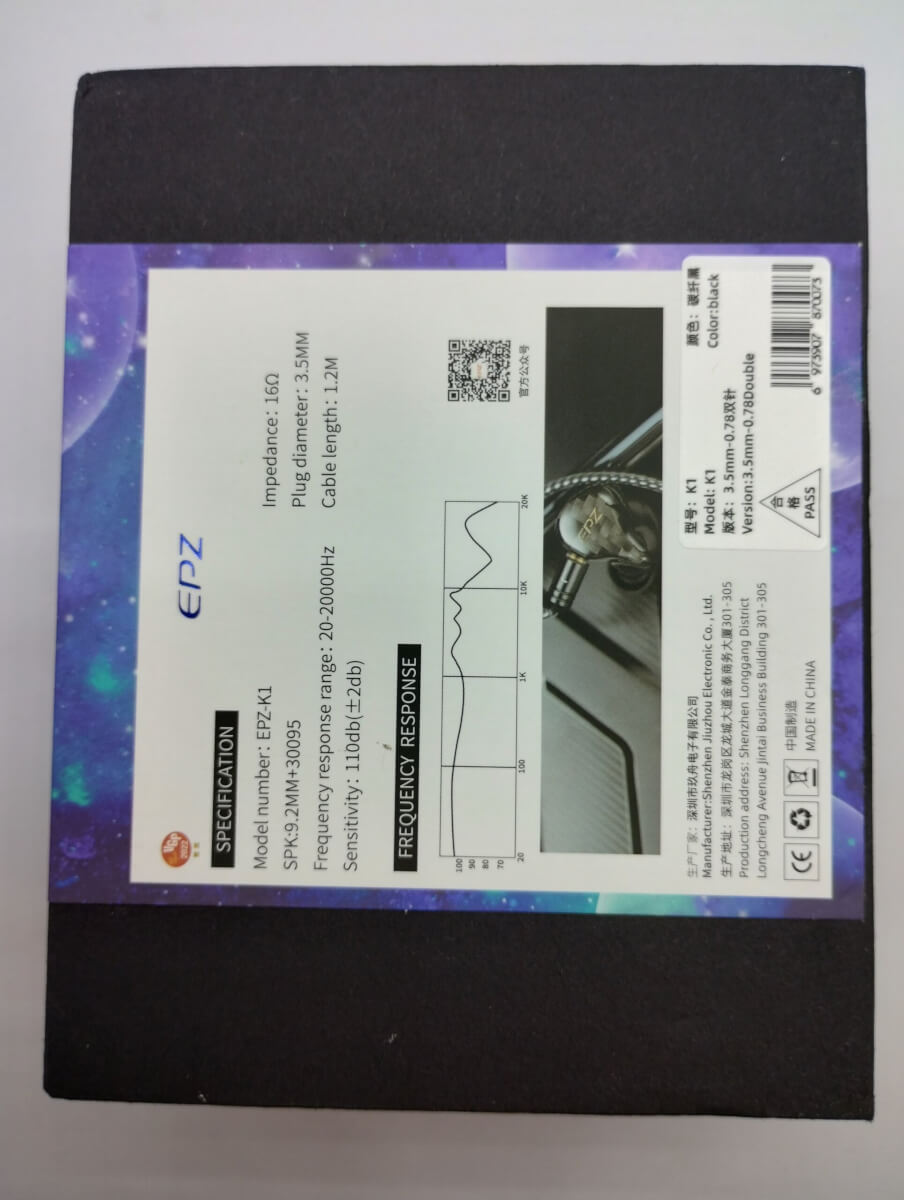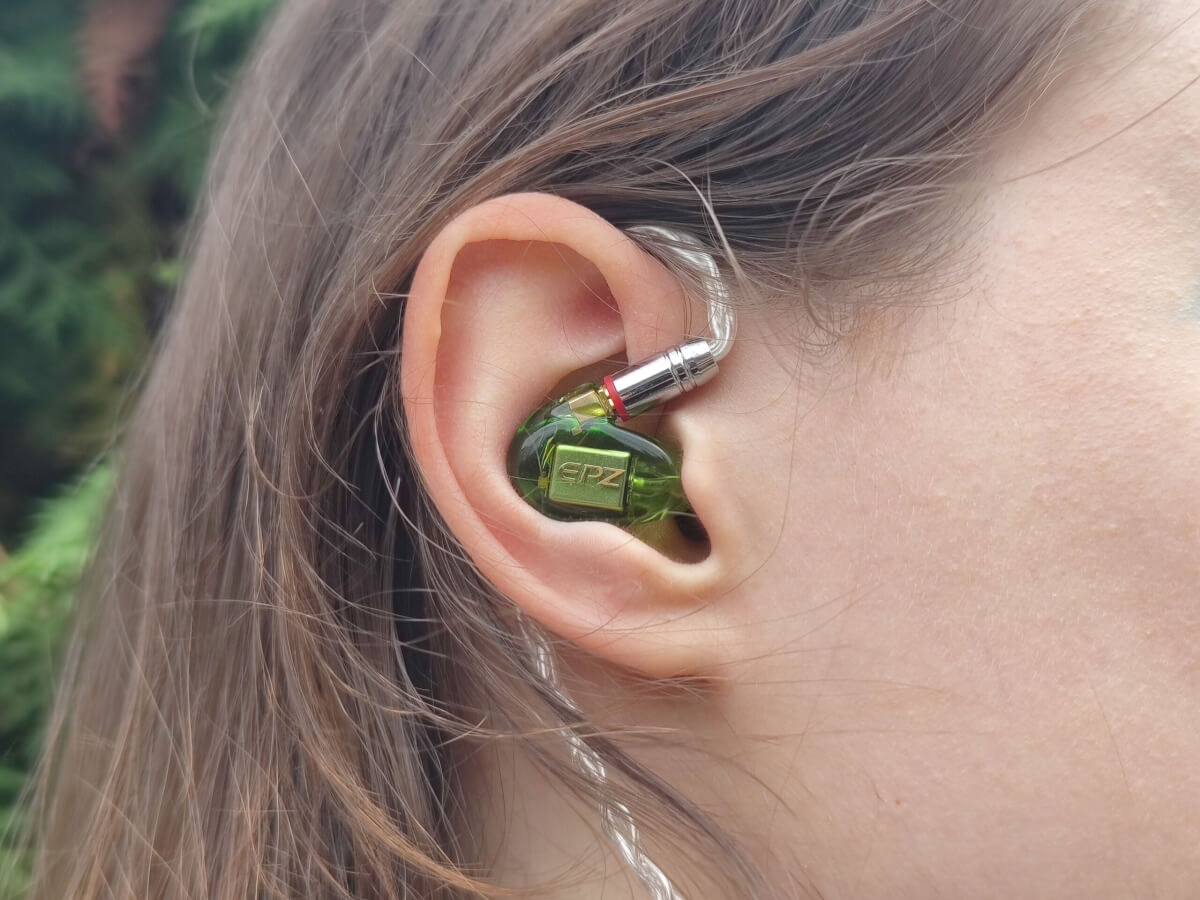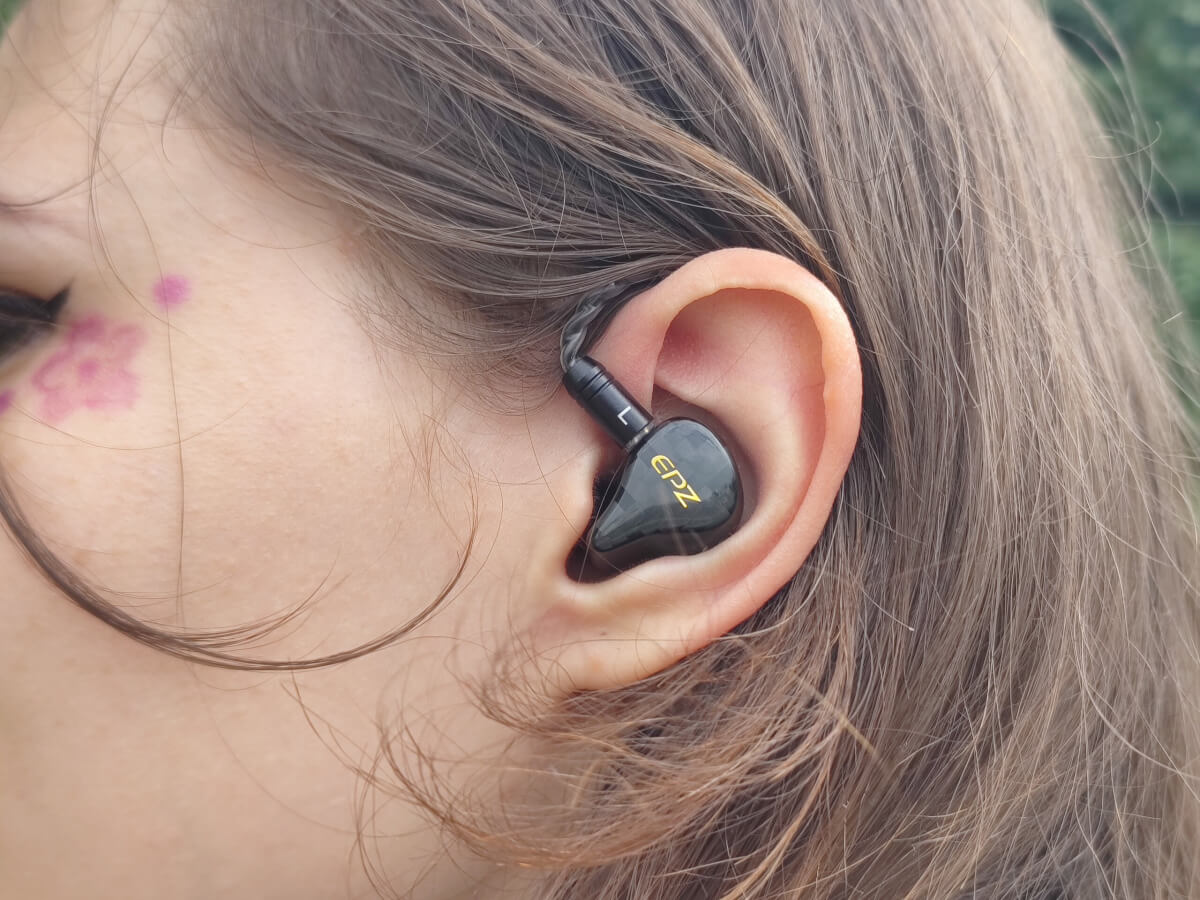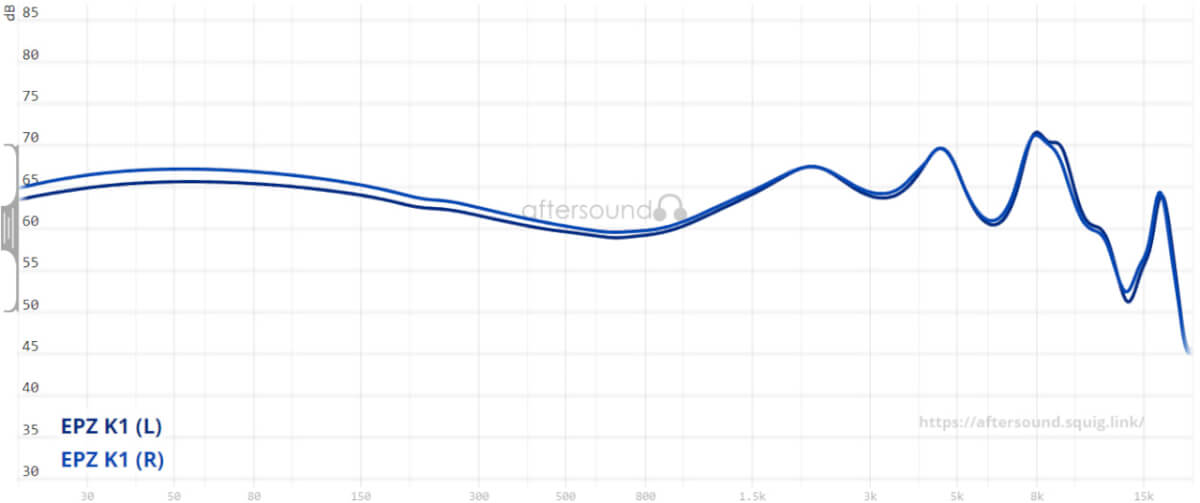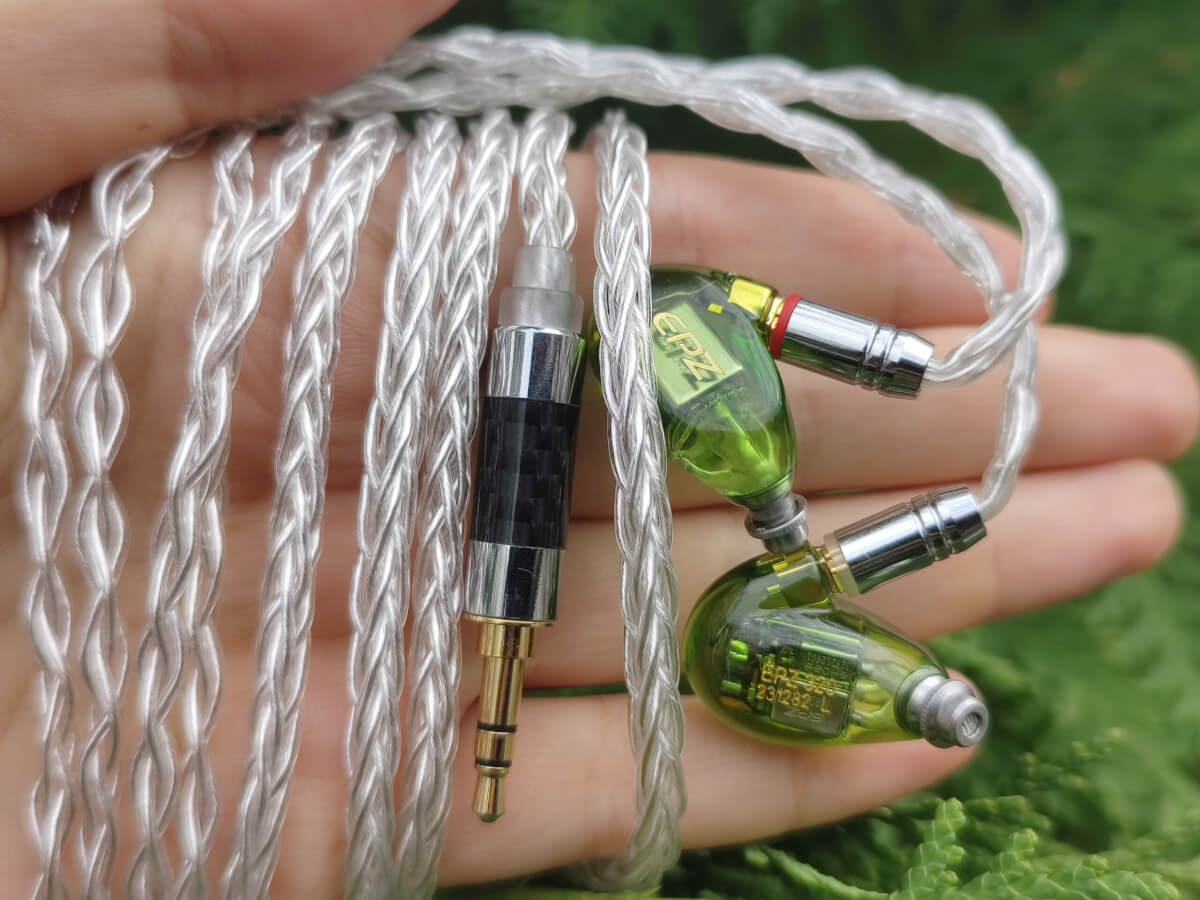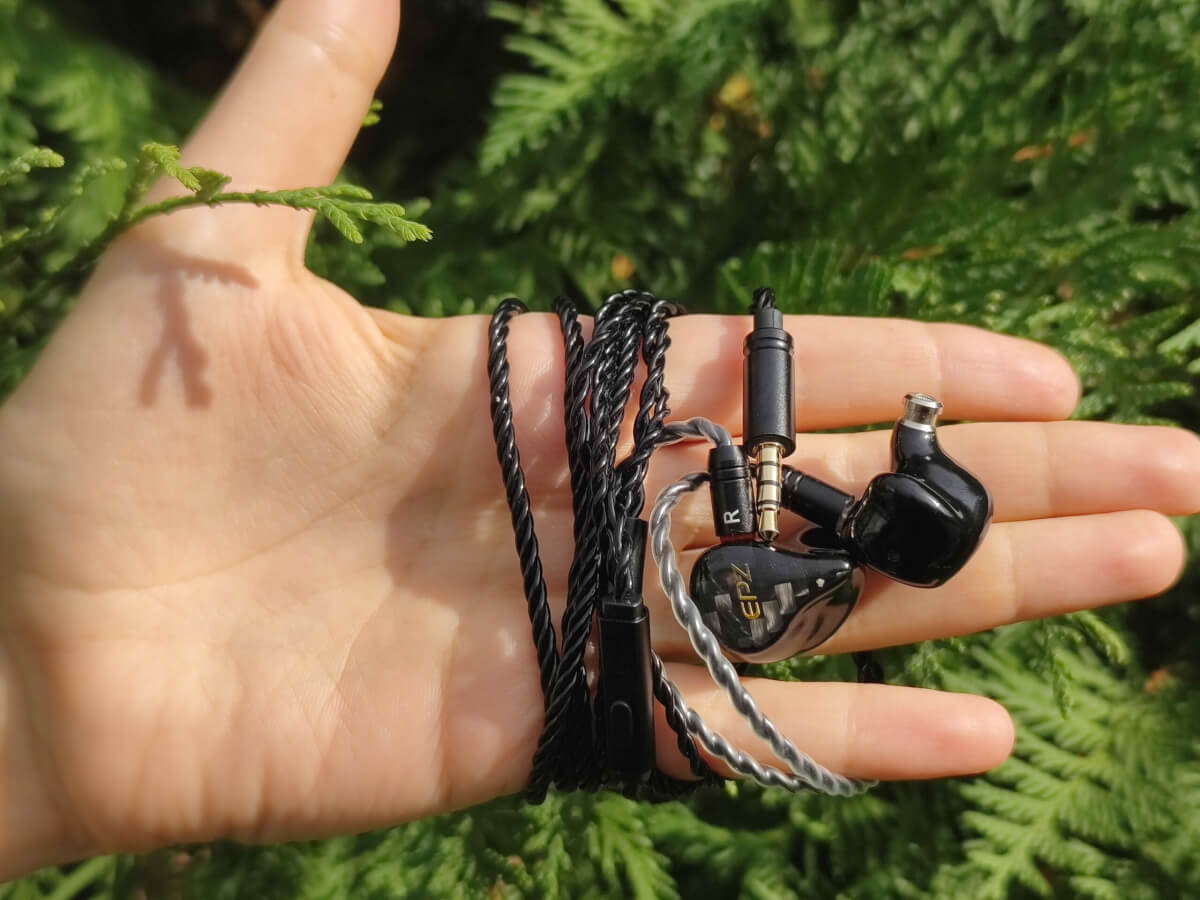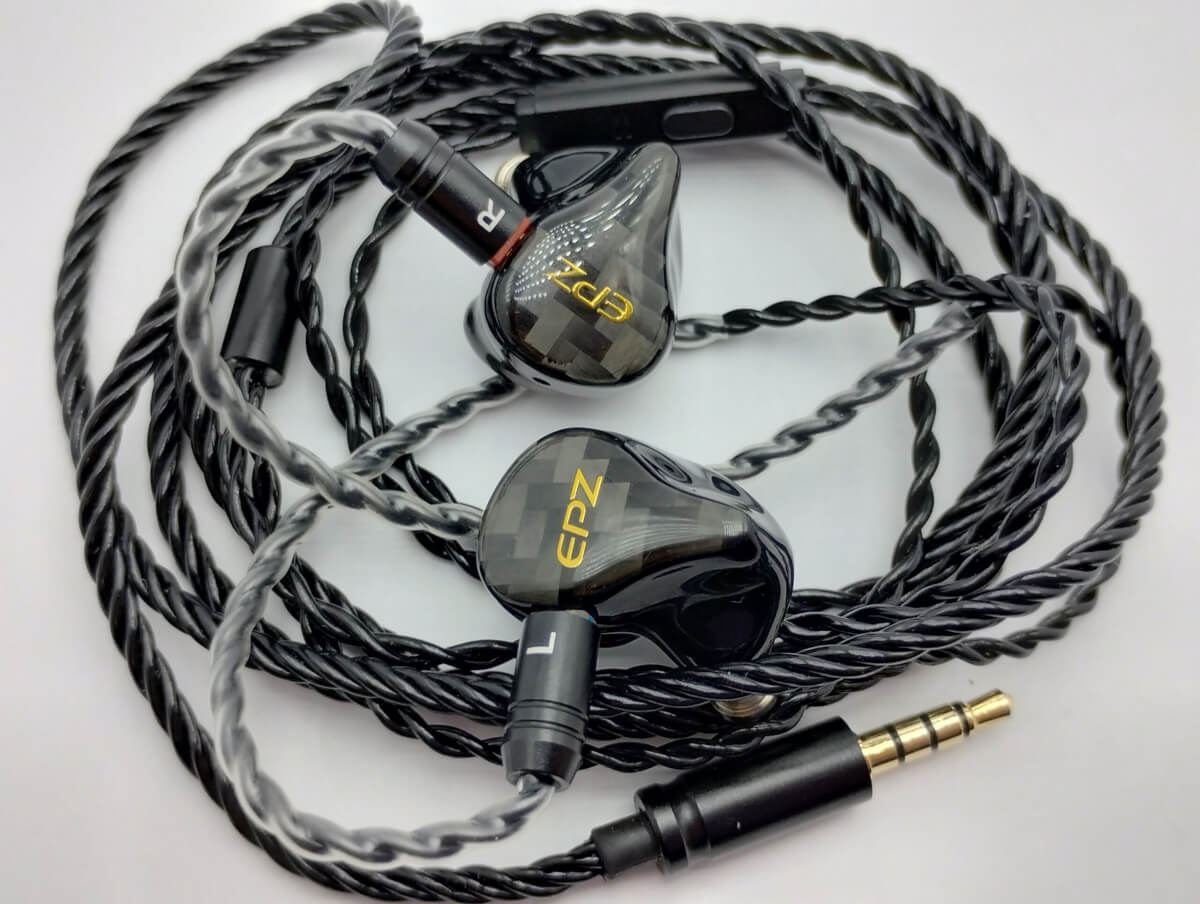excellent headphones with clear midrange and prominent sub-bass
- Embossed subbass
- Singing midrange
- Beautiful Design
- Excellent set
- Uneven Highs
- Insufficient midbass
- Not a wide stage and weak detail
- Thin sound guides
- How the headphones sound.
- I'll talk about the design, the package and comfort.
- I'll compare them to other headphones I know.
- I will perform modernization of the sound drivers.
What does EPZ offer in headphones?
Balanced sound: deep bass, clear mids and soft highs.
Precise frequency tuning: 3-level crossover for accurate sound reproduction.
Convenient: compact design to fit Asian ear shape.
Interchangeable items: MMCX cable and filter for better sound and protection.
Resin cavity: durable and comfortable material.
Hybrid driver: deep lows and clean highs.
HiFi sound: frequency balance and detail.
3D printing and comfortable shape.
EPZ 320 and EPZ K1in-ear headphones - the sound
My sonic preferences are centered on maximizing fidelity to the original sound, without adding effects or enhancements. That’s why I chose the Questyle QP1R as my main source – its sound is the most reference and closest to the original.
Both models have high sensitivity, which allows them to cope perfectly with different sound sources, and I will continue to use my players for testing. I will choose the EPZ 320 as my primary model, not because it is more expensive, but because its sound is closer to my preferences.
- The bass frequencies of the 320 – 7 : headphones are perceived linear, accurate and honest with the listener. They are not embellished or overblown. Accustomed to V-different sound presentation music lovers will be uncomfortable with the lack of bass, but its amount is dosed exactly as much as recorded on the track. The sub bass with good attack and decay conveys all the reverberations in the bass, emphasizing the percussive punch, but not straining with its presence. The midbass is more weighty, supporting the bass, it is pleasantly tonal and organic. It fills the sound of the woofer in a measured way, without protruding or overshadowing the rest of the frequency range.
K1 woofers: unlike 320 are more funky and do not have a precise structure. The attacks are less clear as well as the attenuation on the woofer tracks tends to grow into a general hum. The sub bass tries to create a relief sound, but the midbass overpowers with depth and authority, traveling outside its range, overlapping the MF range. - Midrange 320 – 8 : The loudest and best part of the AFC of these headphones. Instruments and performers have natural sounding timbres without a hint of synthetic tones. Male and female voices sound distinct, clear with natural notes. Trumpet saxophones and trombones have a natural sound. Keyboard instruments sound natural and open.
Midrange K1: due to its V-shaped signature sound muffled and overdamped with synthetic notes. It can be characterized as “sound from under the screen”. - High frequencies 320 – 6.5 : HF range is uneven, with sharp drops, which breaks the integrity of the sound. Because of this non-linearity, high frequencies are heard only in individual bursts, losing their harmony and overall directionality. This manifests itself in unpleasant sibilants on hissing sounds. Attenuation in this range is delayed, and extraneous artifacts such as rustling or sandiness may occur when playing dense or fast songs. As a result, high frequencies sound somewhat unnatural, and both detail and overall sound quality are lost on tracks saturated with HF elements.
HF at K1: similar to the 320 HF model, part of the AFC is also not linear. There are spikes and dips in this range, but they are not so critical and perceptible. In K1 the HF part is brighter, which adds detail and depth to the scene.
- Detail in the 320 – 7 : quite detailed, as far as the lower part of the range is concerned. But the subtle and fine HF nuances are not enough due to sags. The 320 does not have a detailed sound.
K1 detailing: this model has quite acceptable detailing in its price segment. It is not excessive, but some unevenness of the recording will show. - Scene – 7 : is characterized by moderate width and depth. Although the soundscapes are relatively well placed, the spatial separation may not be pronounced enough to achieve a full immersive effect.In some genres, such as classical music, this can lead to a sense of compression and loss of detail in complex arrangements, while in, say, an unloaded jazz composition, this may be sufficient.
K1 Headphone Scene: has a wide and spacious panorama, allowing for clear positioning of sound elements and creating a sense of depth in musical compositions. - Conclusion: the 320 strives for a linear AFC, but faces serious problems in the form of sags and spikes in the HF range, leading to a lack of detail and unevenness in the high range. In contrast, the K1 offers a V-shaped response, emphasizing bass and treble, although the midrange is less pronounced. Both are suitable for different categories of users: The 320 is ideal for those who prefer a more neutral sound, such as vocals, jazz and reggae, where the treble is not essential, while the K1 will appeal to electronic and pop music lovers with its bright and dynamic treble. Those who are into loaded rock, metal or classical genres, and those who appreciate rich bass frequencies, should consider other models.
Comparison with competitors
I will do a comparison of the EPZ 320 with other headphones. First of all, I will compare them with AFUL's MagicOne single-driver armature headphones, which cost half as much as the 320. The MagicOne's response is more straightforward in the bass and midrange, resulting in a lack of these ranges, unlike the 320 model. In the high-frequency range, the MagicOne exhibit brightness and contrast, whereas the 320 exhibits dips and peaks. Sound detail is more pronounced in the MagicOne, but the stage feels much better in the EPZ 320. Because of the bright treble and weak bass and midrange, as well as the failing stage, the MagicOne are unable to demonstrate melodicism. Thus, the EPZ 320s unequivocally win this round.
The second comparison I will make is with the BQEYZ Wind model, which uses dynamic and bone drivers, but is located in the same price segment as the 320 model. Both models sound pretty close. However, the BQEYZ offers a slightly more textured and deeper bass. In the midrange there is rough parity, although the 320 has a more tonal sound. The high-frequency range completely wins out over the BQEYZ Wind, as it is smooth and bright. Detail and stage are also better with the Wind. Therefore, the BQEYZ Wind is the winner here.
Design, kit and comfort
EPZ 320.
- Design: the 320 model is housed in a roomy black box, with the headphones themselves on the front and the specifications on the back. Inside the box are two earbuds, reminiscent of green lollipops from childhood, adorned with gold EPZ branded faceplates. In the green resin you can see the insides of the headphones, including the armature drivers and the MMSX jack for cable connection. The shape of the headphones is unusual and resembles a drop of green amber, ending in a thin metal soundhole tube, with a screw-on filter-restrictor for the earcups at the end. The size of the soundhole is small, preventing the use of third-party ear cushions.
Cable: eight-core cable of good quality with soft earplugs and chrome-plated connectors. The quality of the cable is unquestionable in its reliability and is confirmed by the accuracy of sound transmission.
Ear cushions: located in its own case made of light eco-leather on a metal plate. Two types of small size ear cushions with double and single skirt.
Case for carrying the set is a very high quality and comfortable leather case with a magnet lid and a mesh organizer inside. - Cofort: on this point I want to dwell in detail. Because of the unusual shape of the headphones, non-standard thin direction, I was not able to pick up any of the available ear cushions. Only the SpinFit CP145 M model fit, and that with a caveat – after a small modernization of the soundhole. I matched the thickness of a drinking straw so that it would fit tightly over the metal lid of the soundhole. I stretched it a little with round-nosed pliers and put it on the lid of the soundhole. With this I achieved a thickening of the soundhole, which allowed me to lengthen the soundhole as well as to use third-party ear cushions without fear of losing them when removing them. Only with this modernization I was able to listen to the headphones. Therefore, I lowered the rating by 2 points.
- Set: excellent: good quality cable, 2 types of ear cushions, ear cushion organizer, headphone cleaning brush, ear cushion pouch and carrying case. A very thoughtful set.
Design - 8
Comfort - 7
Set - 10
EPZ K1.
- Design: The headphones are in a smaller box with the EPZ K1 labeled on the front and technical data and an AFC graph on the back.
The design and construction is standard and ergonomic, made of black resin, with no compensation hole but one vent on the end of the case. The faceplates have a carbon fiber pattern. The soundhole has the right angle and length, but the diameter is insufficient for third-party earpads. So I advise you to upgrade too, you can heat shrink tubing to increase the size.
The cable is 4 core, black in color to match the headphones. “Liquid” kind of tangled has a microphone unit. In his defense, we can say that it is without microphone effect. In this price segment is acceptable.
Ear cushions with the same disadvantages as the model 320. 2 kinds of gray with double skirt and single skirt are located on a metal plate organizer.
Case is not provided.But there is a roomy velvety pouch for the ear cushions. - Comfort: Due to the thin diameter of the sound conduit and not deep ear cushions, I had similar difficulties with the fit as in the 320 model. Therefore -1 point.
- Set: sufficient for this price segment.
EPZ 320 specifications
- Product Color: Optional
- Control function on cable: Not available
- Connector: 3.5 mm
- Basic Process: Medical Resin Molding
- Cable length: 1.2 m
- Sensitivity: 110 dB (± 0.5 dB) / 100 dB (± 3 dB)
- Wearing style: In-ear
- Drivers: 3 armature drivers
- Impedance: 19Ω
- Headphones: Customizable
- Technical Features: 3-frequency tuning, 3 sound holes
- Frequency range: 20-20000 Hz
What's in the EPZ 320box ?
A commendable package:
- Headphones.
- MMCX to Jack 3.5mm wire.
- 2 types of ear cushions:
Silicone single-shell ear cushions,
Silicone double-shell ear cushions. - Pouch for ear cushions.
- Headphone case.
- Brush for cleaning headphones.
- Instructions.
Bottom line
Both models presented in the review can hardly be called harmonious in sound.
Model EPZ 320 offers an unconventional appearance and high-quality, but narrowly focused sound. These headphones will suit users who prefer a more neutral and balanced sound without HF range, such as musicians vocalists, guitarists, etc., as they sound good for vocal music, jazz and reggae.
The K1s are aimed at electronic and pop music lovers, thanks to their bright treble and dynamic sound, which makes them attractive for genres where energy and expressiveness are important.
I liked the models overall. But I wouldn't recommend for advanced audiophiles and audiophiles.



